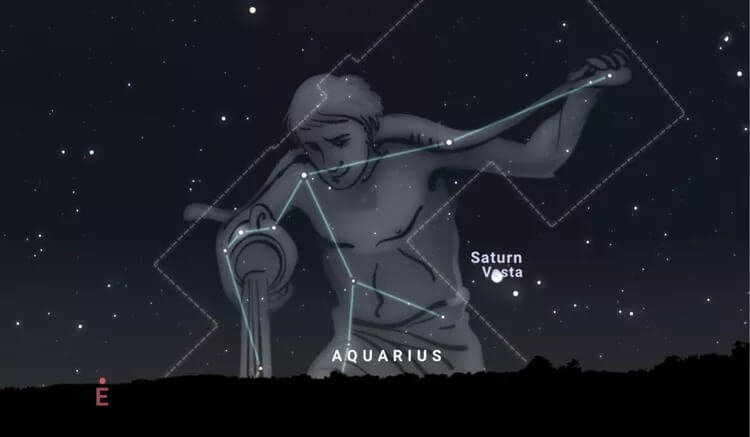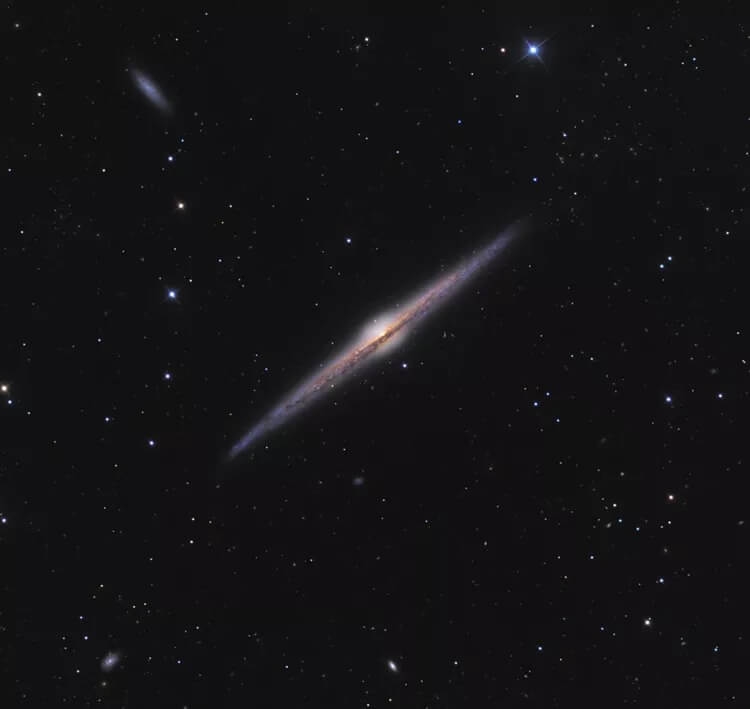
While this month’s celestial events may not be as numerous as others on the calendar, May’s promise of warm evenings and floral bouquets will nonetheless make you want to dust off that outdoor blanket, grab a sweatshirt, and look up. Wishing you clear skies!
Take in the Beauty of the Full ‘Flower’ Moon (May 5)
May’s full moon, nicknamed the “Flower Moon’’ after the copious springtime blooms, reaches its peak fullness on the evening of May 5. Other names include the “Frog Moon,” “Egg-Laying Moon,” and “Leaf Budding Moon,” with many originating from Indigenous Peoples in North America.
May’s full moon will also feature a prenumbral eclipse for those in Europe, Asia, Australia, and Africa. This type of lunar eclipse occurs when the moon passes deep into the outer part of Earth’s shadow (known as the penumbra), resulting in a darker-than-usual shade of gray across the Moon’s surface. This is different from the dramatic transformation of the lunar surface that occurs during a full lunar eclipse when the moon travels through the inner part of the Earth’s shadow (known as the umbra) and turns a ruddy red.
Gaze Upon a (More Brilliant) Eta-Aquariids Meteor Shower (May 6)

The Eta-Aquariids, triggered by debris from Halley’s Comet entering our atmosphere, will reach their peak between May 5-6th. While this annual shower favors those living in the Southern Hemisphere, early risers in the Northern Hemisphere will still have an opportunity to see some shooting stars.
Despite interference from a full moon, Space.com reports that this year’s shower could be more spectacular than usual. According to Bill Cooke, the lead for the Meteoroid Environment Office at NASA’s Marshall Space Flight Center, this year’s shower originates from particles ejected from Comet Halley in 390 BC; with the potential for more than double the standard rate of 50 shooting stars per hour!
This shower gets its name from the constellation Aquarius, where the meteors appear to radiate from. On the morning of May 6th, Aquarius will rise above the eastern horizon just after 3:30 a.m. EDT. According to NASA, the peak of the shower will arrive at 4 a.m., creating a small viewing window before dawn crashes the party. Should the weather not cooperate, mornings before and even after the peak should still display a decent amount of Eta-Aquariids.
View a Lunar Occultation of Jupiter (May 17)
Following up on the occultation of Uranus back in January, the next planet to be concealed behind the Moon will be Jupiter on May 17th. Despite taking place after dawn for a good portion of the U.S., those on the east coast should still be able to see Jupiter as its eclipsed by a thin crescent moon around 7:45 a.m. EST. By the time it reemerges (around 8:52 a.m. EST), sunlight will spoil the finer details, but it’s likely you’ll still be able to pick out the pair with some binoculars or a small telescope. As always, be mindful of where you’re looking: Even a brief, fleeting glance at the Sun through these instruments can result in permanent blindness.
If you’re in a spot where encroaching daylight is a problem, think of this year’s event as a practice run for Oct. 6, 2026. On this date, a rare occulatation of Jupiter will take place before dawn, ensuring (as long as weather doesn’t spoil the view) a dark backdrop for this spectacular event.
For a full list of times for the occultation of Jupiter on May 17th from your location, jump here.
A New Moon Welcomes Dark Skies (May 19)
Just like last month, we’re kicking off May with a New Moon and exceptionally dark skies. For a few days leading up to and after May 1, you can train your eyes, binoculars, or telescope and be treated to pristine views of galaxies, shooting stars, and other wonders otherwise dimmed by moonlight.

Need a target? This month, we’re recommending the Needle Galaxy (NGC 4565), so-named for its narrow profile and located 40 million light years away. One of the more stunning galaxies to search for, the Needle is beloved for its luminous, round core and colorful dust lanes. Look for it through an 8-inch or larger scope by focusing on the constellation Coma Berenices.
Keep Tabs on the Northern and Southern Lights (All Month)
Solar maximum, the point when the Sun’s magnetic field reaches its pinnacle of strength and turbulence, resulting in heightened levels of solar activity, is expected to occur as early as next year. While increased solar activity can spell trouble for radio communications and even the power grid, it also means a greater chance of stunning aurora activity at lower latitudes around the globe. On April 23/24, a solar flare directed squarely at Earth kicked off auroras above as many as 30 states—stretching from Washington to Maine, and as far south as Kansas.
In the coming months and years, as we move ever closer towards solar maximum, opportunities to catch this colorful phenomenon will hopefully increase. Knowing when, however, skies are primed for aurora activity can be challenging. If you’re into Twitter, following the account Space Weather Watch, managed by a space physicist, is one way to score alerts. If you prefer the smartphone route, the app SpaceWeatherLive offers another, with notifications and detailed reports of auroral activity at your fingertips. Happy aurora seeking!




